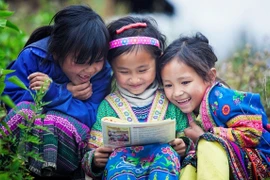According to the ministry, in recent years, the legal systemand policies related to child labour have been improved, and the prevention andreduction of child labour has received increasing attention from the Partycommittees, authorities, ministries and sectors as well as the engagement ofrelevant organisations, businesses and the whole society.
The second national survey on child labour, conducted in2018 by the MoLISA, showed the rate of child labourers from 5 to 17 years olddecreased from 9.6 percent in 2012 to 5.4 percent in 2018, which was 2percentage points lower than the average Asia-Pacific rate, and over 4percentage points lower than the global average. This has created favourableconditions for Vietnam to participate in the signing of trade agreements andglobal integration, and strengthen international cooperation in the preventionand reduction of child labour.
However, Dang Hoa Nam, Director of the MoLISA’s Departmentfor Child Affairs, said there remain child labourers in the agriculturalsector and the places where it is difficult to interfere in; and the awarenessof officials, employers, parents and child caretakers remains limited.
Therefore, Nam stressed the need to intensify the dissemination work, especially on the position and importance of ensuring theimplementation of child rights in the community. He also emphasised the irreplaceablerole and responsibility of parents and families in child labour prevention.
According to the department, Vietnam’s Programme on Preventionand Reduction of Child Labour for the 2021-2025 period, with a vision to 2030, aimed to reduce the child labour rate to 4.9 percent by 2025 and 4.5 percent by2030. It also strives to improve the consciousness of 90 percent of officialsand teachers, and provide knowledge on this issue for 70 percent of parents,caretakers and children./.





























